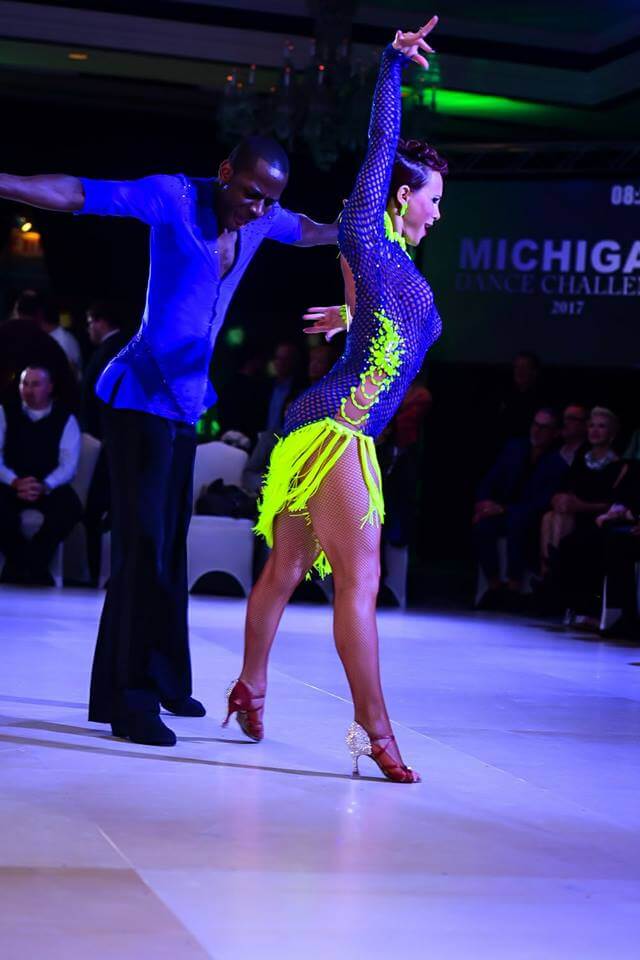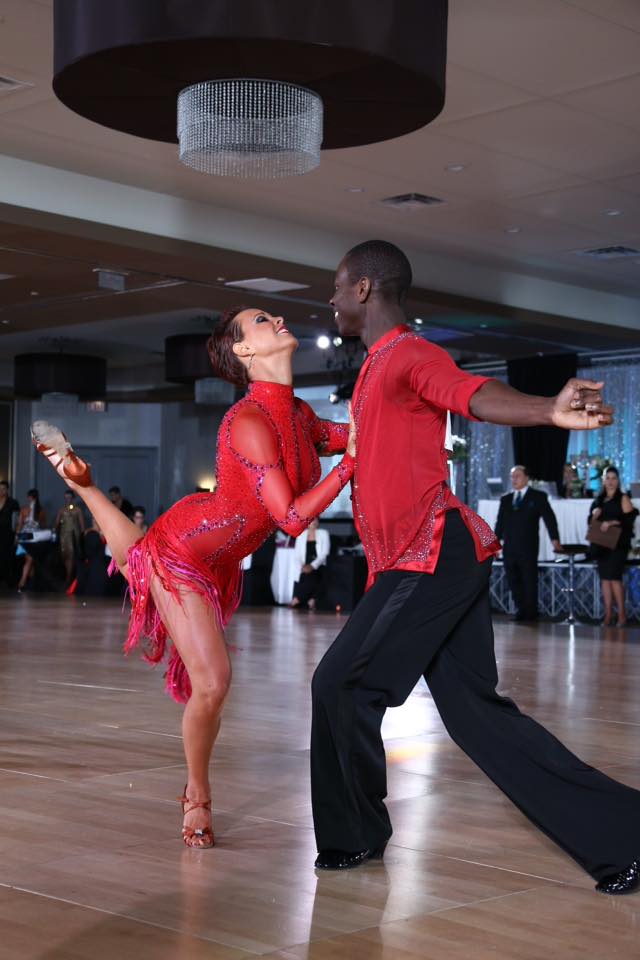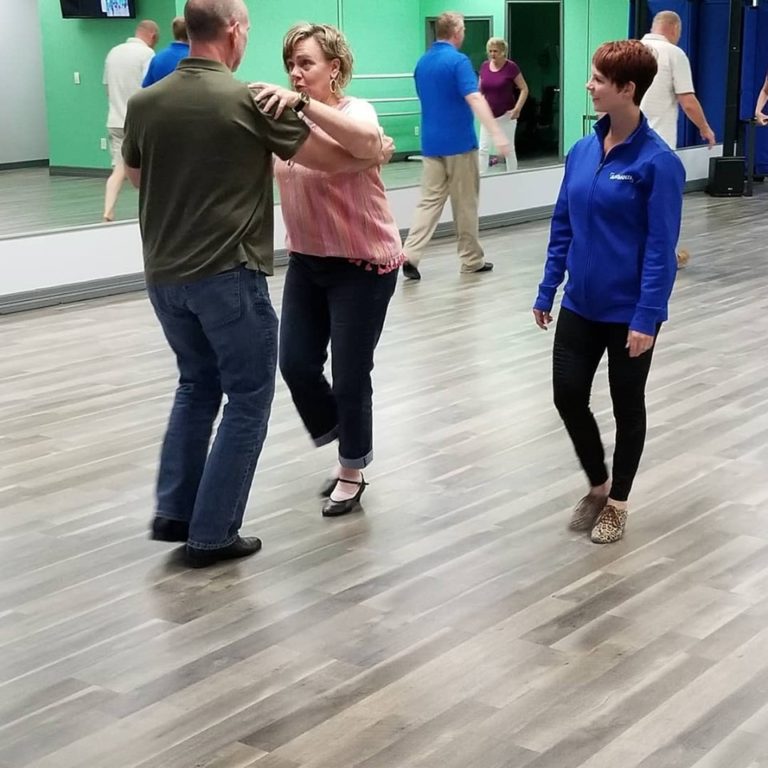Oftentimes, many students have no idea how much there is to learn in partner dancing. Most think they have learned a complete dance after only learning a few patterns. That is an amazing accomplishment but that’s only the beginning. When I tell them about the different levels and figures within each level, sometimes their jaws drop. In this blog, we are going to discuss the different levels of dance and what to expect in each level. Below is a list of the levels we will be going over:
- Bronze
- Silver
- Gold
Bronze Level Dancing
This is where it all begins. When you take partner dance lessons for the first time, this is the level you will be starting in. At this level, the focus is on building a foundation, and having fun, of course. Each dance has about 15 figures plus variations and can be broken down into three sections of 5 patterns. This makes the learning more digestible. Depending on the studio, these sections are called Bronze 1, 2, and 3, or Pre Bronze, Intermediate Bronze, and Full Bronze. The figures in Pre Bronze are usually simple, and as you move through Intermediate and Full Bronze, it will get more complex.
For those of you who don’t know what a figure is, it’s a standardized step pattern that may consist of only 1 step or as many as 24 steps, sometimes more. However, learning figures only gives us our context within a dance; learning the techniques and characteristics associated with the dance is what makes it dancing and not just stepping. In bronze, you will learn basic techniques and skills that will help you become a better-quality dancer and help you effectively lead or follow the figures you are learning. For example, I’d be delighted for my bronze-level student to be able to maintain good posture, a toned frame, and coordinate bending and straightening their knees while dancing the Rumba at this level.
Many students spend years dancing at the bronze level. This is for a few different reasons; learning to dance requires multitasking and some people are better at that than others. Not only do you have to learn where to put your feet, but you must also communicate through body actions and frame to your partner what should be danced, count the timing, and listen to the music all at once! Because all these aspects are new, it takes longer to learn the figures in multiple dances. However, after a few months, some of these skills will become easier and you should notice that you are able to pick the material up quicker than when you first started – so keep up the great work!
Bronze Pro/Am Rhythm competition video: https://youtu.be/GZHoahZ4yFk
Bronze Pro/Am American Smooth competition video: https://youtu.be/vAhvVDQChkk

Silver Level Dancing
In the silver level, you should be able to apply the correct technique, maintain a good frame, connect with your partner, and add styling in all the dances you do; the figures you will be learning in this level are naturally more advanced, and therefore, require you to have a good foundation. This is when the dance gets even more fun! Like bronze, there are 2 to 3 sections (Pre Silver, Intermediate Silver, and Full Silver) within the silver level; some dances have 15 figures in the syllabus, while others have only 10 figures. In this level, you will notice a variety of rhythms in all dances; there will be hesitation rhythms, syncopated rhythms, and combinations of both within a figure which makes it more interesting. Dancers at this level will also be better at coordinating their arms and hands with their body movements to create lines and shapes to fit the character of the dance they are doing. Next, I’ll explain some of the distinct differences from bronze to silver between styles of dance.
In the American Smooth dances, dancers will have longer, more continuous movement, and pass their feet at the end of a measure (in Waltz and Foxtrot), rather than closing them as they did in bronze. At this level, dancers must have a good frame and connection to be able to execute the difficult figures and actions. To have a good frame in silver, dancers will keep their elbows stretched wide and slightly in front of the body, use body contact for better leading and following, and leverage counterbalance within their own body, and head weight to counterbalance each other – this connection allows you to use centrifugal force when doing rotational figures and actions.
Pro/Am Smooth competition: https://youtu.be/X_zeC72dMyY
In the American Rhythm dances, silver-level dancers understand how and when to use compression and leverage and therefore, have a more elastic connection. Of course, this great connection is possible because they also dance Cuban Motion on every step. When done well, Cuban Motion allows dancers to naturally compress towards each other and create slight tension when completing a step. At this level, dancers should know how to properly articulate their feet and ankles to move with control and balance from foot to foot.
Pro/Am Rhythm competition: https://youtu.be/7YhSJIbWqRI
In the more social style dances, such as West Coast Swing, Salsa, and Hustle, dancers will be more nimble and comfortable adding flair to their movements. They will also demonstrate better musicality and playfulness with any song that comes on.
Gold Level Dancing
Gold-level dancers have it all! By now, you have been taking lessons, practicing, maybe competing for a while now, and it shows. These dancers have fine-tuned their techniques in each style they dance; they demonstrate control, balance, and confidence with everything they do. In the gold level, the figures are even more complex than in Silver and require dancers to have a great connection, frame, and body action. Like in silver, this syllabus will have about 10 figures per dance and will be broken down into 2 sections of 5 to make the learning more digestible. One difference you may notice in this level is that the syllabus figures allow dancers to showcase their individual strengths because they may spend more time apart from each other either dancing side by side or facing each other without touching. Gold-level dancers are polished from head to toe and move with ease from foot to foot.
Pro/Am Smooth competition: https://youtu.be/qw_WyZU1MCw
Pro/Am Rhythm competition: https://youtu.be/gwCha-GfxS4
As you can see, there is much to learn in partner dancing. Regardless of the level you are currently at, enjoy the process because, like most things, it’s not about the destination – it’s about the journey. Thanks for reading this post 😊






2 thoughts on “Levels of Ballroom Dancing”
Great information! Loved the videos showing the different levels. I would love to receive more information like this. I am an amature that have finished Bronze and Silver in competition in all smooth and rhythm and performed at least eight showcases. I started with DVIDA syllabus and just recently joined Fred Astaire and am learning their syllabus. I love learning and articles like this one is very helpful. Thank You!l
Thank you for your comment! We have tons of educational tip videos on our YouTube channel. Here is the link: https://www.youtube.com/channel/UCa73ChXPGmo8fcHM07jbPiw Also, if your ever in the Northwest Houston area, feel free to stop in. We would love to hear more about your dance journey. Keep up the great work : )